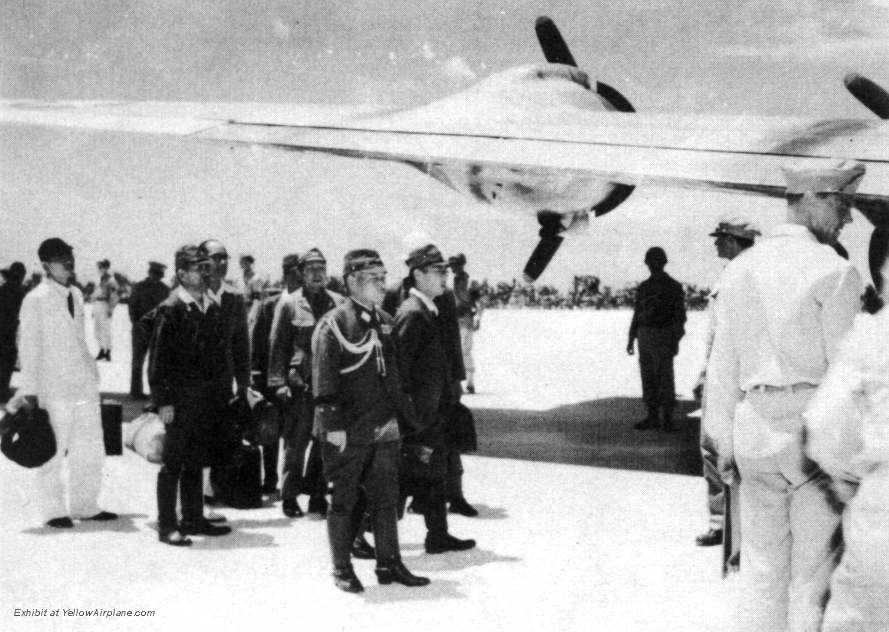 |
|
|
From
the 34th fighter Squadron Yearbook. The Japanese envoys surrender on the island
of Ie Shima at the end of World War 2.
|
|
 |
| The flight safely landed on the island of Ie Shima, however, one of the Betty's ran off of the runway and was damaged and unable to fly the remainder of the mission. The picture below shows the two Betty's sitting on the ramp with a guard standing with a machine gun. This was the most important flight of the war, but at the same time one of the least heard of. | ||||||
| The Japanese
retaliate with the Kamikaze - the " Divine Wind " a one -way air
force made up of children launched with only one day of Flight
Instruction. For 82 days they came . You |
||||||
|
|
|
Japanese Surrender Home Page. |
|
|
Japanese Propaganda Art Exhibit
Propaganda Art was used by forces on all sides in WW2 as well as all wars in
history. This kind of art gave pride to the citizens of those countries
who produced it and gave a unity in support of the wars. This exhibit is
an excellent example of Japanese Propaganda art. |
 |
|
|
| WW1 Aircraft | WW2 Fighters | Jet Fighters | Ships | Tanks | Guitars |
Look at these exhibits and tell me what these men really fought for.
the 34th fighter Squadron
USS Kitty Hawk
About the Webmaster, Why God Send Me to the North Pole
/34th/JapanSurrenderWWII-5.html|48775"
| . |